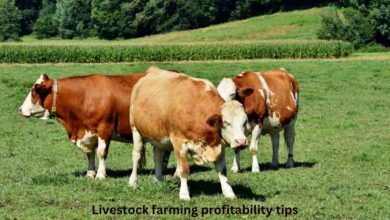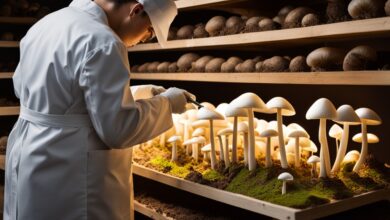Discover Benefits of Vertical Farming Systems 2024
Benefits of Vertical Farming Systems : Vertical farming is a new way to grow food that’s good for our planet. It helps make sustainable food production in India better. This article talks about the main benefits of using vertical farming systems. It shows how they increase crop yields, save resources, and help the environment.

Benefits of Vertical Farming Systems
Vertical farming uses stacked growing layers to make the most of every inch of land. This method can grow more crops per square foot than traditional farming. It’s perfect for cities where there’s little land available. Plus, it uses less water because it controls the water carefully and recycles it.
Also Read : Modern Farming Equipment and Technology Advances 2024
Also, vertical farming is kind to the planet because it doesn’t need fossil fuels for transport. It brings food closer to people, cutting down on the harm caused by traditional farming.
Introduction to Vertical Farming
Vertical farming is a new way to grow food that tackles the challenges of traditional farming. It grows crops in stacked layers, often inside buildings. This method uses space and resources better, offering hope for sustainable farming.
What is Vertical Farming?
Vertical farming is a new way to farm that stacks crops in layers. It’s done in cities or indoors, not on big farms. This method uses space well by stacking crops, saving resources like water and energy. It’s a greener way to grow food.
The Need for Sustainable Agriculture
As the world’s population grows, we need sustainable farming more than ever. Traditional farming uses a lot of land and water and harms the environment. Vertical farming uses less land and water and cuts down on carbon emissions from food transport.
By looking at the advantages and disadvantages of vertical farming, we can make our food system better. As we improve vertical farming, it could change how we grow food in the future.
Benefits of Vertical Farming Systems
Vertical farming systems bring many benefits for sustainable food production. They use advanced tech and controlled environments to improve plant growth and efficiency. This makes them better than traditional farming methods.
One big plus of vertical farming is getting more crops from the same space. By controlling things like light, temperature, and nutrients, farms can grow plants faster and more efficiently. This is great for areas with little land, helping to meet the world’s food needs.
These systems also let farmers grow crops all year, not just during certain seasons. This is because they’re inside and protected from the weather. So, there’s always fresh food available, helping to solve food shortages.
Vertical farming uses much less water than traditional farming. It recycles and uses water wisely, saving up to 95% of it. This is key in areas where water is scarce, helping to make farming sustainable.
Also Read : Urban Farming Best Practices 2024: Grow in Small Spaces
Also, vertical farming takes up very little land. By stacking crops, it uses space more efficiently. This is perfect for cities where land is hard to find, allowing for fresh produce close to people.
There are more benefits too. Vertical farming can cut down on the carbon emissions from growing and moving food. It reduces the need for long trips and less use of fossil fuels. This helps the environment.
In summary, vertical farming has many benefits. It helps with food production, sustainability, and uses land and water wisely. These methods are a good answer to the world’s food needs while caring for the planet.
Efficient Use of Resources
Vertical farming systems are great at using resources wisely. They offer big benefits for the environment and the economy. One big plus is how well they save water.
Water Conservation
Old-school farming uses a lot of water to grow crops. But vertical farming is different. It uses a closed-loop system to recycle water, saving a lot of it.
This means vertical farms can save up to 95% of the water used in traditional farming. They keep reusing the same water, which is really smart.
Land Optimization
Vertical farming also makes the most of the land it uses. It grows crops up high, so it can produce more in a smaller area. This is good for the planet and also saves money.
It’s a way to farm that’s both kinder to the earth and cheaper to do. This makes vertical farming a smart choice for the future.
| Metric | Traditional Farming | Vertical Farming |
|---|---|---|
| Water Consumption | High | Up to 95% reduction |
| Land Usage | Extensive | Highly Efficient |
| Crop Yield | Moderate | Significantly Higher |
Vertical farming is great for the planet and for saving money. It uses less water and makes the most of the land. This makes it a solid choice for farming in the future.
Environmental Advantages
Vertical farming systems have big benefits for the environment, like a smaller carbon footprint. They cut down on the need for long trips and use less fossil fuel. This helps India focus on sustainable farming and renewable energy.
Reduced Carbon Footprint
Vertical farms in India use precise farming methods inside. This means less use of harmful chemicals. It makes farming more eco-friendly and lowers carbon emissions. Plus, these farms use land more efficiently, making them even more sustainable.
Vertical farming in India does more than just save resources. It helps fight climate change and supports a greener future for farming in the country.
FAQ
What is the definition of vertical farming?
Vertical farming is a new way to grow crops. It stacks crops in layers, often inside, to use space and resources better.
Why is there a need for sustainable agriculture?
With more people on Earth, we need sustainable farming. Traditional farming uses a lot of land and resources. So, we’re looking for new ways to grow food efficiently and responsibly.
What are the key benefits of vertical farming systems?
Vertical farming has many benefits. It grows more crops, produces food all year, uses less water, and needs less land. It uses technology and controlled spaces to help plants grow better and produce more.
How do vertical farming systems conserve water and land?
Vertical farming uses resources wisely. It uses much less water than traditional farming by recycling it. It also grows crops up high, so it uses less land to produce more food.
What are the environmental advantages of vertical farming?
Vertical farming is good for the planet. It cuts down on carbon emissions by reducing transportation and fuel use. It also uses fewer chemicals, making farming more eco-friendly.




